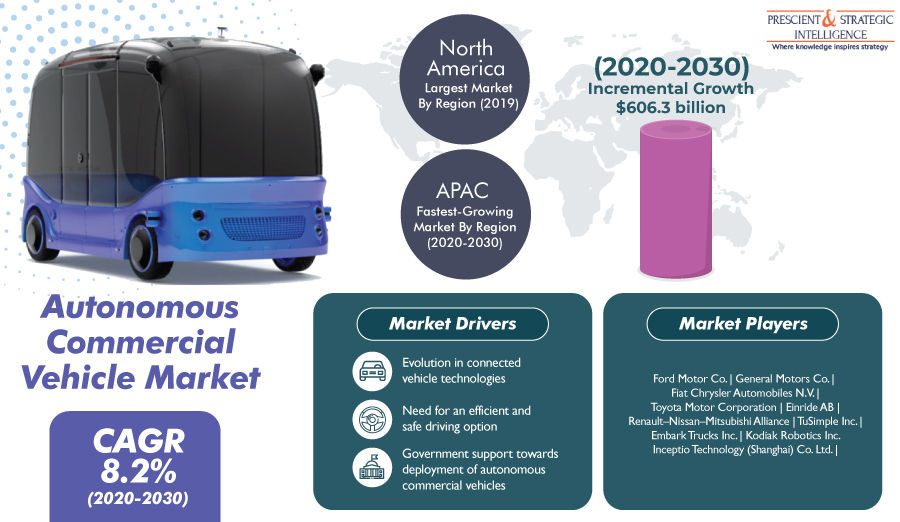How isIncreasing Number of Road Accidents Driving Demand for Autonomous Commercial Vehicles?
- Pramod Kumar

- Oct 27, 2022
- 2 min read
Vehicles have certainly made the lives of human being easier, however, the technology has certain drawbacks as well, one of which is the increasing number of road accidents. The major cause of road accidents is human error, since drivers often fail to pay attention properly, drive vehicles at inappropriate speed, and fail to keep safe distance from vehicles moving in front. It is ascribed to such factors that the need for enhancing safety on roads and requirement for safer and more efficient driving option has been surging rapidly across the globe.

This, in turn, is resulting in the growth of the autonomous commercial vehicle market, since the autonomous technology offers safer performance. In addition to this, the evolution in connecting vehicle technologies has also been leading to the growing demand for autonomous commercial vehicles. It is much easier to integrate autonomous technologies in connected vehicles as compared to traditional vehicles. Connected cars are being equipped with vehicle-to-interface and vehicle-to-vehicle connectivity, which are the key requirements for achieving autonomy of vehicles. This rising digitization in the industry is expected to result in the growth of the domain.
According to a report by P&S Intelligence, the global autonomous commercial vehicle market is expected to progress at an 8.2% CAGR during the forecast period (2020–2030). In terms of vehicle autonomy, the market is bifurcated into semi-autonomous and fully-autonomous. Between which, the semi-autonomous bifurcation held the major share of the market in 2019. For achieving level 1 automation, vehicle needs to be equipped with at least one of the advanced driver assistance system (ADAS) features or electronics stability control. Furthermore, countries in Europe and the U.S. have mandated the installation of basic ADAS features in new commercial vehicles, thereby making them semi-autonomous.
Geographically, North America dominated the global autonomous commercial vehicle market in the past, as per a P&S Intelligence report. The demand for the technology is further expected to be the highest in the region during the forecast period. The rising research & development activities and increasing support from state and federal governments for the evolution of autonomous driving technologies are resulting in the growth of the regional market. The Asia-Pacific region is projected to exhibit the highest CAGR during the forecast period, due to the fact that the region is the largest automobile manufacturing industry across the globe.
In conclusion, the demand for autonomous commercial vehicles is growing due to the surging need for enhancing safety on roads, advancements in connected technologies, and heavy investments.






Comments